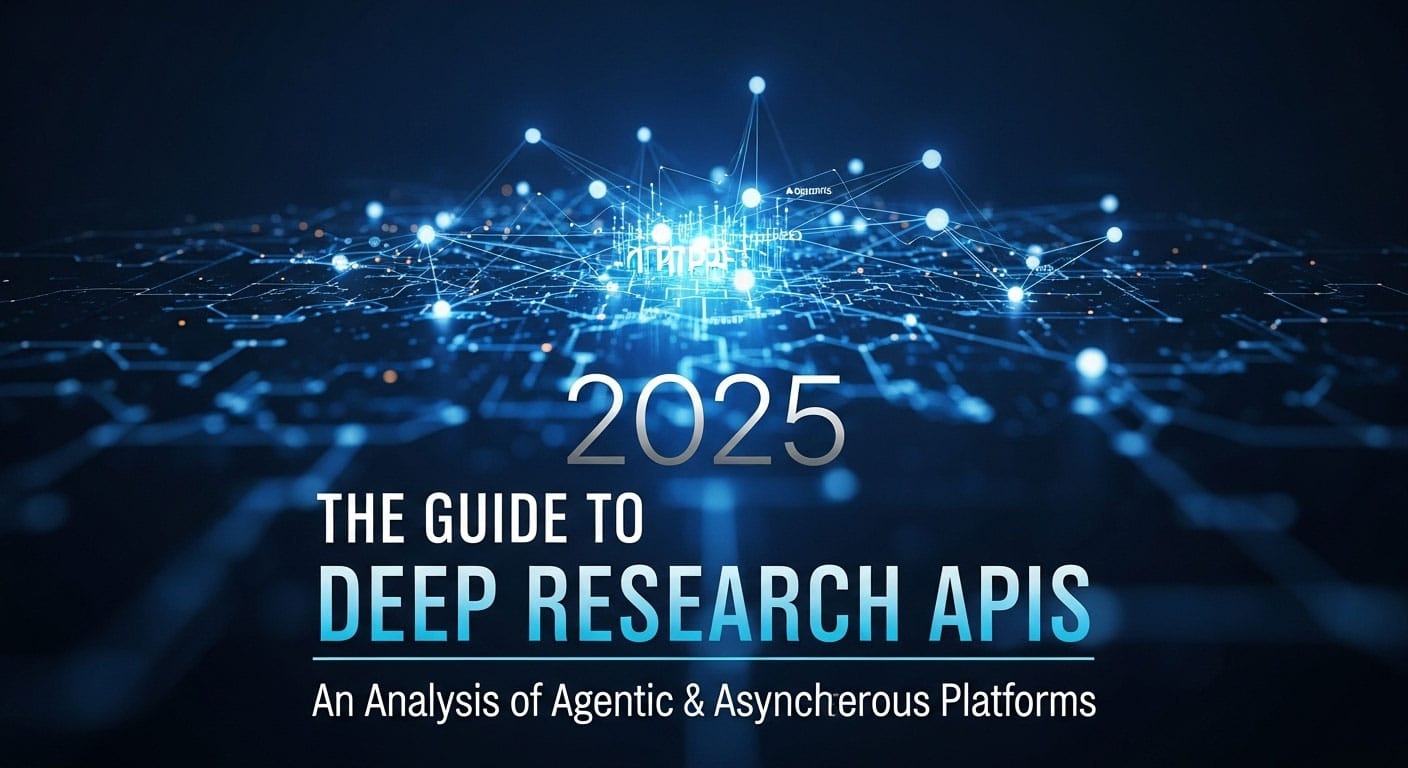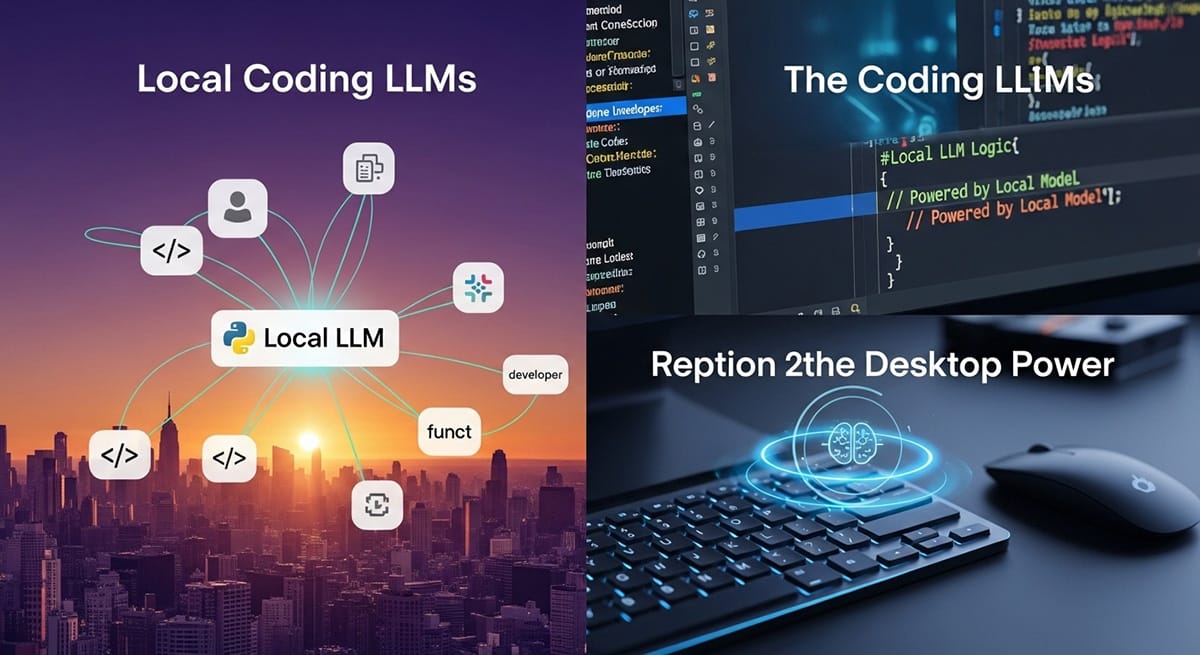The landscape of Application Programming Interfaces (APIs) is undergoing a profound transformation, driven by advanced artificial intelligence. The traditional, stateless request-response model is giving way to a new paradigm of stateful, agentic systems. This shift is most evident in the emergence of Deep Research APIs 2025, a class of services designed not just to retrieve data, but to autonomously conduct complex, multi-step research tasks. These platforms represent a fundamental change, moving from simple information retrieval to the automated generation of comprehensive, data-driven insights.
The New Paradigm of Automated Research: From Stateless Calls to Stateful Agents
The core change is a move from single-turn, stateless interactions to long-running, agentic processes that can reason, plan, and interact with an environment over time. This new model requires a complete rethinking of API architecture, prioritizing asynchronous communication to handle computationally intensive tasks.
Defining “Deep Research” in the Agentic Era
In the context of modern AI, “Deep Research” is an agentic capability. An AI agent autonomously takes a high-level query, breaks it down into logical sub-questions, executes a plan using multiple tools (like web search or code execution), and synthesizes the findings into a structured, citation-rich report. For example, a research agent can independently find, analyze, and synthesize information from hundreds of online sources, including text, images, and PDFs. This iterative process, which can take five to thirty minutes, is crucial for performance, as an AI’s accuracy on complex tasks increases with more “thinking time” and tool calls.
The Architectural Imperative: Why Asynchronous Processing is Non-Negotiable
The long-running nature of deep research makes the traditional, synchronous HTTP model impractical. A client application cannot maintain an open connection for minutes without causing timeouts and resource exhaustion. Consequently, asynchronous architectural patterns are a fundamental necessity. Two primary patterns have emerged:
- Asynchronous Polling (HTTP 202 Accepted): In this “pull” model, the client initiates a task with a POST request. The server immediately responds with an
HTTP 202 Acceptedstatus and a unique URL in theLocationheader. The client then periodically “polls” this status URL with GET requests to check if the job is complete and to retrieve the final results. - Webhook Callbacks (The “Push” Model): A more efficient, event-driven alternative. The client initiates a task with a POST request that includes a callback URL (a webhook). The server processes the job in the background. Upon completion, the server makes a POST request to the client’s webhook URL, “pushing” the final results directly. This eliminates polling and reduces network traffic.
The Emerging Ecosystem: Tools, Protocols, and Gateways
This shift has catalyzed a new ecosystem. The Model Context Protocol (MCP) is an open protocol designed to standardize how AI agents discover and use external tools, allowing them to connect to private knowledge stores and third-party APIs. Concurrently, API Gateways are evolving into AI-aware control planes that can manage both synchronous and asynchronous traffic, offering features like predictive analytics and automated security for AI workloads.
Premier Agentic Research Platforms: A Comparative Deep Dive
The market is coalescing around major technology providers, each offering a distinct approach to agentic research. While all leverage asynchronous architectures, their philosophies and product offerings differ significantly.
OpenAI: The Productized Deep Research API
OpenAI offers a formal, product-led Deep Research API, a complete system for automating research workflows. It uses agentic models that can reason, plan, conduct live web searches, analyze documents, and execute code.
- Core Models: The API is accessed via the
/v1/responsesendpoint and offers two primary models:o3-deep-research-2025-06-26for highest-quality synthesis ando4-mini-deep-research-2025-06-26for faster, more cost-effective tasks. - Asynchronous Execution: Developers can initiate a non-blocking job by including the
background: Trueparameter. The platform also supports webhook notifications for a fully event-driven workflow. - Agentic Capabilities: Native tools include
web_search_previewandcode_interpreter. The Agents SDK allows for the orchestration of complex, multi-agent systems (e.g., Triage, Clarifier, Instruction Builder, and Research agents). - Data Integration: Support for the Model Context Protocol (MCP) allows agents to connect to private data sources, fusing public web data with confidential enterprise knowledge.
Anthropic: The Collaborative, Safety-Focused Research System
Anthropic approaches automated research with a focus on building robust, safe, and collaborative multi-agent systems. Its “Research” feature leverages multiple Claude models to explore topics by conducting iterative searches across the web and internal knowledge sources.
- Core API: The primary API for developers performing high-throughput, asynchronous tasks is the Message Batches API.
- Asynchronous Execution: The Message Batches API is designed for non-latency-sensitive jobs and follows the asynchronous polling pattern. A key incentive is the 50% price discount compared to standard synchronous calls.
- Agentic Capabilities: Anthropic’s architecture features a lead agent delegating sub-tasks to multiple sub-agents for parallel information gathering. Claude models support tools like
web_search_toolandcode_execution_tool. - Data Integration: The platform has fully embraced the Model Context Protocol (MCP) as its primary mechanism for connecting Claude agents to external tools and private knowledge bases.
Google Gemini: A Modular Toolkit for Custom Research Agents
Rather than a single, pre-packaged API, Google provides a powerful, modular ecosystem of tools built around its Gemini models and Google Cloud platform. This “building block” approach empowers developers to construct their own custom research agents.
- Core Models: The foundation is the family of advanced, multimodal Gemini models, including Gemini 2.5 Pro and Gemini 2.5 Flash.
- Asynchronous Execution: Google offers two primary mechanisms: Batch Mode, an asynchronous endpoint for high-throughput jobs that follows the polling pattern and offers a 50% discount, and the
generate_content_asyncmethod in its Python SDK for granular control using Python’s nativeasynciolibrary. - Agentic Capabilities: The primary mechanism for agentic behavior is Function Calling. This allows the model to intelligently decide when to call external tools and APIs, enabling developers to build custom agent networks with distinct roles (e.g., Analyzer, Researcher, Synthesizer).
- Data Integration: Function Calling provides immense flexibility, allowing Gemini agents to connect to virtually any data source or service with an API.
The Foundation: Asynchronous APIs for Web-Scale Data Ingestion
The effectiveness of any research agent depends on the data it can access. A specialized class of third-party APIs provides this foundational layer, handling the complexities of web-scale crawling and delivering structured data through asynchronous mechanisms that are symbiotically aligned with agentic platforms.
Bright Data: The Enterprise-Grade Data Collection Platform
Bright Data offers a comprehensive suite of Web Access APIs for large-scale data collection. Its asynchronous Web Scraper API is designed for scale, using a /trigger endpoint for large jobs with no timeout limitations. Its workflow is built around webhook delivery (the “Push Model”), where it POSTs the final structured dataset to a client-provided URL upon job completion.
Oxylabs: The AI-Powered Scraping and Scheduling Service
Oxylabs provides a Web Scraper API with AI-driven features. Its primary asynchronous mechanism is the Scheduler, which automates recurring scraping jobs using cron expressions. Results are delivered asynchronously via direct push to cloud storage (AWS S3, GCS) or by notifying a callback URL.
Crawlbase: The Callback-Centric Crawling System
Crawlbase’s “The Crawler” is a purpose-built, asynchronous system operating purely on a callback model. A developer submits URLs, and Crawlbase handles the entire crawling process, POSTing the final results directly to a user-configured webhook. This pure “push” architecture is ideal for building scalable data pipelines to feed agentic research systems.
Strategic Analysis and Implementation Guidance
Choosing the right technology requires a clear understanding of the project’s goals. The landscape for these powerful agentic research platforms in 2025 is diverging, offering distinct solutions for different needs.
Comparative Framework: Choosing Your Platform
The tables below summarize the capabilities of the core reasoning platforms and the foundational data ingestion APIs, helping you make an informed architectural decision.
Table 1: Comparative Analysis of Premier Agentic Research Platforms
| Feature | OpenAI | Anthropic | Google Gemini |
|---|---|---|---|
| Core Product/API | Deep Research API & Agents SDK | Research Feature & Message Batches API | Gemini API with Batch Mode & Function Calling |
| Asynchronous Mechanism | background: True parameter & Webhook Callbacks (Push Model) | Message Batches API (Polling Model) | Batch Mode (Polling Model) & asyncio SDK methods |
| Agentic Capabilities | Turnkey multi-agent pipelines via dedicated Agents SDK | Engineered multi-agent system with focus on delegation & safety | Modular, custom agent construction via asyncio & SDKs |
| Native Tool Integration | Web Search, Code Interpreter; Extensible via MCP | Web Search, Code Execution, Text Editor; Extensible via MCP | Extensible via Function Calling to any external API |
Table 2: Asynchronous Capabilities of Data Ingestion APIs
| Feature | Bright Data | Oxylabs | Crawlbase |
|---|---|---|---|
| Asynchronous Method | /trigger endpoint for batch jobs | Scheduler (cron-based), Push-Pull method | Pure Push-based API |
| Data Delivery | Webhook Callback, Cloud Storage, API Polling | Cloud Storage, Callback URL, API Polling | Webhook Callback |
| Key Features | Web Scraper IDE, AI-powered parsing, large proxy network | OxyCopilot (AI code generation), AI parsing, Scheduler | Automatic retries, Request ID (RID) tracking |
Strategic Recommendations and Use Case Mapping
- For Turnkey Market Intelligence: Use OpenAI’s Deep Research API. It offers the most productized, out-of-the-box solution for generating structured, citation-backed reports, providing the fastest path to deploying a high-quality research feature.
- For Highly Customized R&D: Use Google’s Gemini Toolkit. Its modular nature and powerful Function Calling offer unparalleled flexibility for integrating with specialized scientific databases or internal lab systems.
- For Safety-Critical or Regulated Industries: Use Anthropic’s Claude Framework. Its heavy emphasis on safety, reliability, and principled agent design makes it a strong choice for legal or financial applications where accuracy is paramount.
- For High-Volume, Continuous Data Pipelines: Pair any agentic platform with a specialized data ingestion API like Crawlbase or Oxylabs. These services are purpose-built to offload the complexities of continuous, large-scale crawling, providing a reliable asynchronous data stream to your reasoning engine.
Future Outlook: The Road to Fully Autonomous Research
The emergence of these advanced research APIs marks a significant milestone. Future trends include the rise of a “Tool Economy” enabled by protocols like MCP, and a continued blurring of the line between data ingestion and reasoning platforms. However, challenges remain, including the potential for generating convincing misinformation and the ethical considerations of autonomous, web-scale data collection. Navigating these issues will be critical as the technology matures.
Developer Access and Documentation Hub
This section provides a consolidated hub of official resources for the platforms analyzed in this report.
- OpenAI
- Anthropic
- Google Gemini
- Data Ingestion Platforms
- Bright Data: Web Access APIs Documentation
- Oxylabs: Web Scraper API Documentation
- Crawlbase: The Crawler API & Webhook Guide











